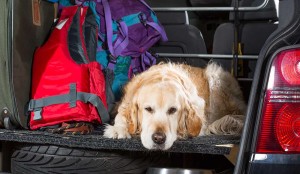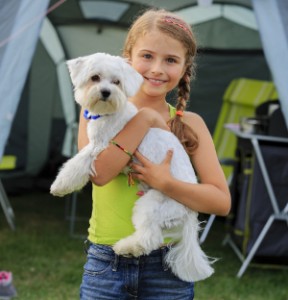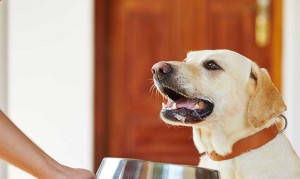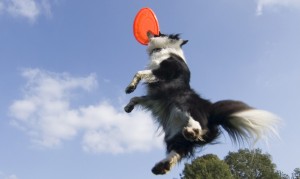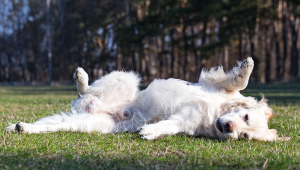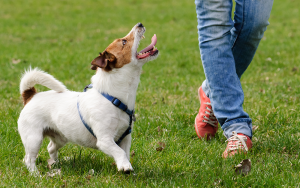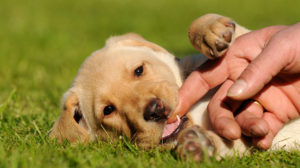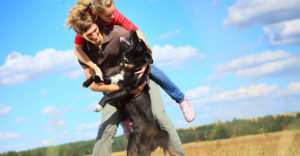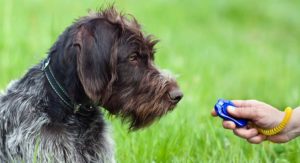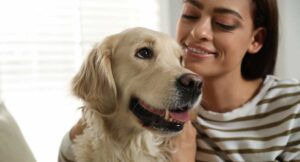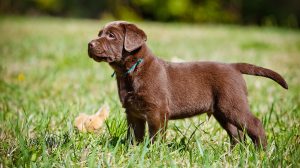Clicker training works by building an association between a behavior you want to see, and something your dog is motivated by, like a treat or a game. The clicker is a little box with a button that you push which makes a sharp, consistent clicking sound. We call it an […] Read More
My Dog Won’t Get In The Car!
There are four main reasons that dogs don’t want to get into cars, trucks or other vehicles. It will either be because getting in is not rewarding, that the act of climbing in or the ride is unpleasant, or because they aren’t ready to go home. The last problem, the dog […] Read More
12 Places To Socialize A Puppy
Socializing your new puppy is one of the most important things you’ll do in those early weeks together. But the process will be much more effective if you have a plan, and understand where to socialize a puppy to get the best results. Parks, beaches, superstores and schools are all great […] Read More
Introducing A Puppy To A Cat
I’ve introduced a lot of puppies to cats over the years. These have all been working bred dogs with high prey drive, and it has always gone smoothly. I truly believe that any puppy introduced to an adult cat slowly, with planning and preparation, can go on to live happily […] Read More
How to Use Your Dog’s Meals As a Training Aid
Are you reluctant to train with treats because of the extra calories? It’s an understandable concern many owners have about positive reinforcement training. But there is a very simple way to avoid over feeding your dog while using training treats. Use the dog’s dinner! Contents Snacks vs treats Do dogs […] Read More
10 Top Dog Training Videos
A picture paints a thousand words. And when it comes to dog training, a moving picture does it even better. Dog training videos are a fantastic way of demonstrating the kinds of techniques that I often write about. And there are now some outstanding Youtube channels packed with great information and […] Read More
How To Train A Chihuahua
As the world’s tiniest breed, they are perfectly pocket-sized and make for a fun companion. Especially when you learn how to train a Chihuahua to do cute tricks! There are plenty of Chihuahuas in competitive sports, shows and in movies, proving that they absolutely can be trained to advanced levels. […] Read More
Does Dog Treat Training Really Work: The Evidence
Over the last few decades there has been a huge swing towards less punitive methods of dog training. Watching a modern trainer in action is a very different experience from watching old school traditionalists. Gone are the barked commands, the emphasis on ‘respect’ or ‘dominance’ and even intimidation. In many […] Read More
Disobedient Dog: What To Do When Your Dog Won’t Obey You
There is no truly disobedient dog, just owners that haven’t been shown how to help them understand or feel motivated. Dogs become disobedient as they become more independent. This is because our increasing expectations of them are often coupled with a failure to provide effective motivation for the behavior we […] Read More
How To Teach A Puppy Not To Bite
Learning how to teach a puppy not to bite can seem like a big deal, but with my tips and advice you’ll have this problem solved in no time. The puppy biting stage can be tough, especially when you feel like your puppy is attacking you. But I’m going to […] Read More
Sending Your Dog Away For Training – Puppy School Pros and Cons
Most people attend puppy school or dog training classes on a weekly visit basis. But it is possible to send your puppy or older dog away for residential training with a professional trainer. Whether that is a good idea or not will depend on your circumstances and what you want […] Read More
How To Train A Naughty Dog: 3 Rules To Help You
When you are struggling with a naughty puppy, or trying to cope with a difficult adult dog, you can feel very alone. It can be difficult to decide what to do next. Or you might find yourself trying to focus on specific aspects of your dog’s behavior, when in fact […] Read More
Aggressive Puppy – How To Stop Puppy Aggression Fast
Dealing with an aggressive puppy is stressful and upsetting, but we can help you stop their barking, biting, chewing and bad behavior. Worrying you have an aggressive puppy is really common. Especially at 11 to 12 weeks old when they are growing in confidence and might start snarling, growling, snapping, […] Read More
How To Stop Dogs From Jumping Up
Liz London is a certified dog trainer through the Certifying Council of Professional Dog Trainers (CPDT-KA) & the Karen Pryor Academy (Dog Trainer Foundations Certification) with regular continuing education courses from the top animal trainers from all over the world. She has trained zoo animals, search & rescue canines, gun […] Read More
Best Dog Training Treats for a Super Successful Training Session
It’s true, the best dog training treats don’t have to come in the form of food to be effective. But it’s equally true that food is a great motivator during training sessions! However, choosing good training treats for dogs isn’t quite so simple as it may appear. The calories in […] Read More
The Three Ds Of Dog Training
When a dog does exactly what you ask, with a happy face and a wagging tail, it’s simply the best feeling! Today we are going to look at one of secrets to dog training success. A simple rule that all top trainers follow, and you can too. It’s the rule […] Read More
How Force-Free Dog Trainers use Reinforcement To Get Great Results
Dog training is so much easier than it used to be twenty years ago. And so much more fun! So don’t let any previous bad experiences put you off. Focus on what works Modern dog training focuses on reinforcing good behavior, rather than focusing on punishing bad behavior. It’s all […] Read More
Dog Training Guides – Lessons And Exercises From Pippa Mattinson
A collection of free dog training guides from best selling author Pippa Mattinson, including clear and detailed dog training lessons and exercises. TRAINING YOUR DOG Puppy Training Basic Obedience Improving Dog Behavior Your Training Skills Dog Training Tricks Pippa shares her forty years of experience in working with dogs, with her easy-to-follow […] Read More
Online Dog Training Courses
A well structured online dog training course, is a great way to get to know your puppy or rescue dog, in the privacy of your own home. The Happy Puppy Site recommends the Dogsnet Training Center as the very best place to get started with online dog training. Dogsnet The […] Read More
Modern Dog Training – Train Your Puppy Without Force
With the launch of Pippa Mattinson’s new force free Online Dog Training Courses, we take a look at how far our training techniques have come. Modern dog training methods and techniques are very different from those used even thirty years ago. We now know how to train our dogs through […] Read More

